- Why We’re Different
- Join Our Team
- Strategic Alliances
- Why Tourism
- Strategic Planning
- Tourism Development
- Workforce Development
- Destination Management
- Destination Marketing
- Solimar DMMS
- Creative Portfolio
- Testimonials
- Tourism for Development Blog
- Case Studies
- Useful links
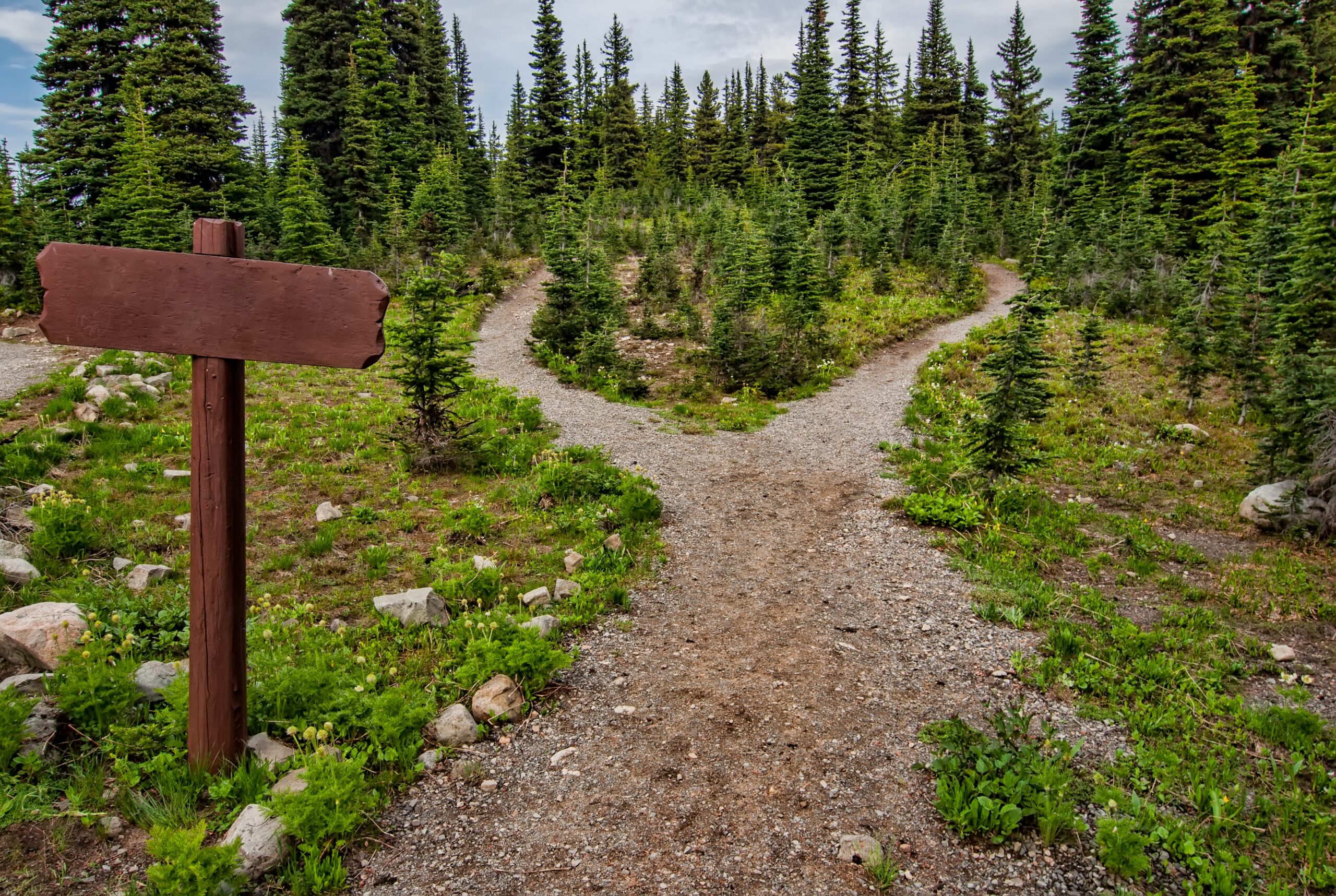

The Transformative Power of Trails: Fueling Tourism Development and Connecting Communities
Written by Ethan Hamlin on August 23, 2023 . Posted in Blog , Uncategorized .
Trails are defined generally as marked paths. With such a simple definition, trails can come in many forms, such as walking trails, biking trails, hiking trails, and multi-use trails. A trail can be a short walking path that connects a community or a hike to the summit of a mountain. For example, the Lewis and Clark National Historic Trail is a driving route of connected towns, metropolises, national parks, natural areas, and historic sites that span more than 4900 miles!
While other forms of tourism engage the traveler with another area’s social, historical, and cultural elements, trail tourism is a form of “ slow tourism .” It encourages the traveler to actively engage and experience the land itself that they are visiting. Slowing down in our fast-paced society is what makes trails so rewarding and worth experiencing. These locations draw tourists to see beautiful areas and landscapes in person. Trail tourism also provides many benefits, such as protecting the environment, boosting the economy, and preserving the culture of the surrounding community.
Environmental and Social Benefits of Trails
As trails come in many forms, walking or biking trails that run through towns can serve as valuable forms of eco-friendly transportation. In fact, trails also come with many environmental benefits. According to the Connecticut Department of Energy and Environmental Protection , trails:
- Reduce air pollution by providing a cleaner form of transportation.
- Reduce road runoff and soil erosion
- Reduce flooding
Utilizing walking and biking trails also greatly benefits the trailgoer in the form of public health. The Rails to Trails Conservancy published a report in 2019 that showed the use of trails successfully connects residents to their destinations by walking or biking, which reduces health problems and consequently reduces the cost of health care.
Economic Benefits of Trails
Trails also stimulate the economies of surrounding communities. As tourists come to experience the trail, they also bring money into the area. According to the Institute for Tourism and Recreation Research , during the summer of 2017, visitors to Mt. Helena who used the trail system brought over $4 million into the area.
In 2013, the Outdoor Industry Association published a study that found that trailgoers spent an average of roughly $60 for one one-day trip, while bikers spent roughly $43 for one day trip. The Outdoor Industry Association also estimated that trail-based recreation generated
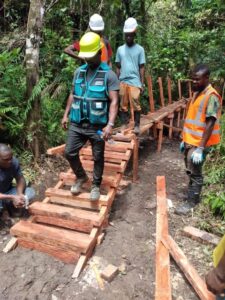
a total of $353,489 spent in Connecticut, and bicycle-based recreation resulted in $704,067 of spending.
As trails support the development of an area’s environment and economy, they are a great way to revitalize depressed towns. A conservation organization funded by the Pennsylvania Department of Conservation and Natural Resources called WePreservePA found that trails attract businesses because they beautify the town or city. Trails were also a significant factor in a homebuyer’s decision to move to a town. This means that the development of trails can not only br ing in money through attracting visitors and improving the environment and the health of those already living in the area, trails also attract new businesses and new residents!
There are several examples of the many benefits of trail development, such as the Camino de Santiago, the Lewis and Clark National Trail, and the trails in Liberia.
1. Camino de Santiago
The Camino de Santiago, also known as the Way of Saint James, is a historic pilgrimage route with deep cultural and spiritual significance. Stretching across various paths that converge towards Santiago de Compostela in northwest Spain, the Camino has drawn pilgrims for centuries. Its origins can be traced back to the medieval times when it was believed that the remains of Saint James the Apostle were interred at the city’s cathedral. Today, people from around the world embark on this journey for a myriad of reasons—spiritual reflection, personal growth, adventure, or cultural exploration. The Camino offers a unique experience of walking through picturesque landscapes, quaint villages, and historical sites, all while fostering a sense of community among pilgrims from diverse backgrounds.
The Camino de Santiago radiates economic benefits across the regions it traverses. This historic and spiritual pilgrimage route draws diverse travelers from around the world, stimulating local economies by generating demand for various goods and services. This includes accommodation, food, transportation, and souvenirs. The hospitality industry witnessed a significant upswing as hotels, hostels, and guesthouses accommodate the pilgrims. Local restaurants and cafes experience heightened patronage, offering traditional cuisine and nourishment to weary travelers. Moreover, transportation services such as buses and taxis thrive as pilgrims navigate different segments of the route. The pilgrimage also fosters cultural and heritage tourism, leading to visits to historic sites, museums, and local attractions, thereby injecting life into local economies. The rejuvenation of historic religious buildings along the route preserves cultural heritage and generates employment opportunities through restoration and maintenance projects. In essence, the Camino de Santiago catalyzes economic vitality, breathing life into the communities that line its path.
According to the Economic Analysis and Modeling Group , travelers of the Camino provide the same economic impact as 2.3 domestic visitors despite only making up 2.3% of total tourist expenditure. While exact numbers are difficult to pin down due to the number of trails considered part of the Camino and the sheer number of visitors every year, according to an analysis referenced by the Milken Institute Review , visitors to the Camino increased the economy of local communities by roughly one-fifth.
Lewis and Clark National Historic Trail
When looking at the impact that trails have in connecting communities and enhancing development, the Lewis and Clark National Historic Trail (LCNHT) is a perfect domestic example. Following the steps of North American pioneers’ journey towards the West, the trail crosses a total of 16 state lines covering around 4,900 miles of distance, making it the longest official trail in the United States.
The LCNHT has the particularity of not being a traditionally marked trail with a clearly defined itinerary. The Lewis and Clark expedition of the early 19th century covered so much ground from Pittsburgh all the way to the Pacific Ocean that the modern itinerary is approximative. This loosely defined trail includes even more alternatives to the tourism experience.
The absence of official physical trail results in many communities and businesses being unaware or simply undiscovered of some of the itineraries previously recommended online. Since 2016, Solimar International has worked with the National Park Service and partnered with the Lewis and Clark Foundation , the Lewis and Clark Trust, and various individual counties to include and connect as many experiences as possible along the trail.
A traveler-focused LCNHT website now serves as a platform for over 1,500 businesses that lie along the trail. An interactive map serves as a source of reference that connects various experiences ranging from immersion in Indian reservations to small history museums that commemorate the history of America’s earliest explorers.
On top of the economic growth that stems from heightened tourist exposure, developing such an extensive network for the trail was a golden opportunity to tell the stories of communities that had previously not been included. Beyond the physical trail, it was key to provide a platform to link the thousands of people who now live and embody the landscapes that Lewis and Clark once discovered on their trailblazing journey, which changed the course of US history.
Indigenous Voices
The LCNHT goes through 15 Native American reservations, giving many tribes the opportunity to offer access to their interpretation of history and their own cultural context as it pertains to their land. As Lewis and Clark traversed West, Native American tribes were key to the success of their expedition. The two explorers often sought to find tribes to trade goods and equipment necessary for the trip, which naturally makes the interpretive history of the concerned Indian reservations a key factor to fully understanding the story. When Solimar International first started working with LCNHT, there was much less content available to tourists. Local businesses that may have been overlooked in the past have a unique opportunity to be showcased through the website’s inclusion of the various cultural centers on the trail and be listed as local guides. It’s important to intertwine indigenous history with the history of the Lewis and Clark Expedition.
Liberia Trail Development
The country of Liberia is home to half of the remaining rainforest in West Africa. Until recently, the beauty of Liberia was hard to fully appreciate as it lacked a proper trail system. Constructing well-intentioned trails in Liberia’s rainforests holds the potential for significant benefits. These pathways could bolster ecotourism, allowing visitors to experience the rainforest’s biodiversity and contribute to local economies. These designated trails would minimize ecological impact, safeguarding the fragile ecosystem. Moreover, these routes could serve as educational resources, heightening awareness about rainforest conservation and nurturing environmental stewardship. The establishment of well-maintained trail networks might also facilitate scientific research, enabling experts to comprehensively study the region’s diverse flora and fauna, thus furthering global conservation endeavors.
Solimar International finished trail development in Liberia in June with the help of the Society for the Conservation of Nature in Liberia . After partnering with the US Forest Service , seen as the gold standard in trail development, the project developed trails running through two protected areas, the Gola National Forest and Lake Piso.
The area surrounding Gola National Forest is primarily sustained by the gold mining industry. The development of these trails hopes to provide economic and environmental alternatives. Local residents made up the crew that worked on the trails. Community involvement in the trail development brought the first of hopefully many jobs to the area. They built 20 kilometers of trails in just ten weeks! Communities gain new life as the trail tourism industry draws people to trails unique to the area.
Lake Piso is a gorgeous coastline that runs for hundreds of miles. There’s a shipwreck that catches the attention of tourists who once followed a slippery, dangerous natural path out to see it. Due to recent trail development, paths running through Lake Piso generate revenue through an admission fee, allowing for better protection of the wildlife and the environment. The money generated to monitor the area will prevent instances of illegal tree harvesting and sea turtle poaching. Now that trails have been built, tourists can safely explore one of the best surf spots in West Africa in a controlled environment that minimizes impact on nature. It will also allow researchers the ability to get deeper into the park.
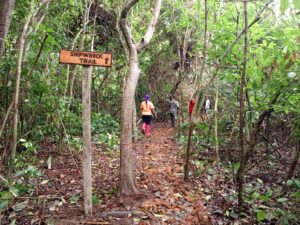
Overall Benefits of Touristic Trails
Trails encompass a wide spectrum of marked paths, catering to various forms of recreational activities like walking, biking, and hiking. They can span from short community connectors to extensive journeys like the Lewis and Clark National Historic Trail, a 4,900-mile route tracing the footsteps of pioneers. Unlike other forms of tourism, trail tourism, known as “slow tourism,” encourages a direct engagement with the land, promoting a deeper connection with nature and local communities. Such trails offer significant environmental advantages by reducing pollution, erosion, and flooding, while promoting public health. Economically, trails inject funds into local economies through tourism, benefitting businesses, boosting property values, and creating jobs. Notable examples like the Camino de Santiago demonstrate the economic vitality and cultural preservation fostered by pilgrimage routes. The Lewis and Clark National Trail showcases how trail networks can connect communities and businesses, while also highlighting the stories of diverse voices, including indigenous perspectives. Even in Liberia, rainforest trail development offers a promising path to ecotourism, biodiversity protection, and environmental education. Solimar International’s efforts in Liberia’s Gola National Forest and Lake Piso reveal how trail networks can revitalize communities, protect ecosystems, and drive sustainable economic growth. Through their multifaceted benefits, trails stand as valuable assets that bridge nature, culture, economy, and community.
Keep up with Solimar’s work on trails such as the Lewis and Clark National Historic Trail and the Liberia Project – don’t forget to like us on Facebook and LinkedIn !
Blog by Ethan Hamlin and Matteo Coleta
Tags: Biking , Camino de Santiago , Community Development , Cultural Preservation , Eco-Friendly Transportation , Economic Impact , Environmental Benefits , Environmental Protection , Gola National Park , Hiking , Indigenous Voices , Lake Piso , Lewis and Clark Trail , Liberia Trail Development , Public Health , Revitalization , Slow Tourism , sustainable tourism , Trail Tourism , Trails


Research Initiatives
The Trail Research Hub undertakes research, education, and outreach initiatives to support sustainable trail development, construction, and maintenance across Canada while establishing best practice guidelines for trails governance and management.
The Trail Research Hub undertakes research initiatives to support sustainable trail development, construction, and maintenance across Canada and to establish best practice guidelines for trails governance and management.
As such, members of the Hub offer the following Research Services:
Community-Based Research Facilitation Study Design and Implementation
Data Collection and Analysis
Production of Academic Papers and Industry White Papers Presentations of Research Findings
Current Research Initiatives
You can learn more about our current research projects and related initiatives below.
.png)
The Hydrocut Trail Economic Impact Study
Community-Based Research Project
Team: Kelsey Johansen, and Harvey Lemelin
The Hydrocut Trail system is consistently ranked as one of the top MTB riding destinations in Ontario and is recognized across Canada for its 35km of “flowing” trails that see over 80,000 visitors per year. The trails are open and free to the public. They feature board walks and bridges, switchbacks and “armoured” walls, with fast lines and technical features to challenge the most skilled of riders.
The purpose of this study is to define the current local versus non-local Hydrocut Ridership profiles, riding and spending patterns, and market segments, understand the trail tourism destination development needs of its market segments, and determine the current and projected future economic impacts of the Hydrocut trail system for the Waterloo Region.
This project a joint collaboration between researchers affiliated with the Trail Research Hub, Lakehead University's School of Outdoor Recreation, Parks and Tourism , the University of Eastern Finland's Tourism Business Research Community , and community partners, the Hydrocut Trails Committee .

Trails and Social Enterprise
Longitudinal Research Project
Team: Kelsey Johansen, Jane McCulloch and Kirsten Spence
The Trails and Social Enterprise Research Project is a longitudinal research project investigating how community-based trail organizations can function under a social enterprise and collective impact model.
This research seeks to identify key trends impacting trail use in Canada, and to determine what governance structures can best support and grow trails in communities across Canada as meaningful outdoor recreation and tourism resources.
Past Research Initiatives
You can learn more about our past research projects and related initiatives below.

Grand Watershed Trail-Based Recreation and Tourism Project
Team: Kelsey Johansen, and Dr. Karla Bolluck (University of Waterloo)
The Grand Watershed Trails Network is a new trail development organization actively engaged in the design and development of a multi-use trail along the Grand River, encompassing a network of trails in the watershed.
The purpose of this study is to gauge regional businesses awareness of the Grand Watershed Trails Network and Ontario by Bike – Bike Friendly Business criteria, and the importance they place on trail-based recreation and tourism, including but not limited to cycling, hiking, and paddling.

Blacksheep MBC - Thunder Bay Region Mountain Bike User Survey
Team: Kelsey Johansen and Dr. Harvey Lemelin
The Blacksheep Mountain Bike Club Thunder Bay Region Mountain Bike User Survey is a joint collaboration between researchers affiliated with the Trail Research Hub, the University of Waterloo's Department of Recreation and Leisure Studies and Lakehead University's School of Outdoor Recreation, Parks and Tourism , and community partners, including the Blacksheep Mountain Bike Club.

Insuring Ontario's Trail Survey
Analytical Support for Survey Research
Team: Kelsey Johansen and Patrick Connor (Ontario Trails Council)
In response to issues presented by members of the Ontario Trails Council’s Subcommittee on Trail Tourism in early 2021, the O ntario Trails Council designed and implemented the Insuring Ontario’s Trails Survey in partnership with the Trail Research Hub who provided analytical support for the survey.
This survey aimed to better understand the current insurance acquisition and insurance policy parameter challenges being faced by trail organizations in Ontario as a result of the COVID-19 pandemic and increasing policy and practice changes within the insurance sector observed over recent years.

Ontario Trails ICD Projects
Joint Community-Based Research Project and Educational Initiative
Team: Kelsey Johansen and Dr. Karla Bolluck (University of Waterloo)
The Ontario Trails Integrated Curriculum Design (ICD) Projects are a series of joint community-based research projects and educational initiatives being undertaken by the University of Waterloo's Department of Recreation and Leisure Studies in partnership with the Ontario Trails Council and trail organizations across Ontario, including the Bruce Trail , Hastings Destination Trails , and the Hydrocut.
Research Publications
Publications arising from these collaborations, including academic papers, white papers, and other outputs (like Infographics, maps and audiovisual materials) created by members of the Trail Research Hub will be available by clicking the button below after they have been shared with community partners.

Share. Foster. Create.
Southwest Michigan Planning Commission
Trail towns.
A “Train Town” is a community in which local officials and businesses leverage their recreational trail systems as a focal point of a tourism-centered strategy for community and economic development. The basic concept is simple: ensure that communities along the trail system are better able to maximize the economic potential and benefits of trail-based tourism. For this planning project, the Trail Town effort was primarily centered on the Lake Michigan Water Trail. However, we did incorporate other terrestrial trails into the strategic planning effort to help broaden the effectiveness of the Trail Town strategy. This effort was funded with MDEQ Coastal Zone Management Program, The Pokagon Fund and the Berrien Community Foundation. This planning project worked to implement components of the Lake Michigan Water Trail Plan, which was developed in 2014 with support from the Michigan Coastal Zone Management Program. Under that planning project, local officials along the Lake Michigan coastline expressed enthusiasm for improving access to their water resources, but often noted funding and planning as a limiting factor for implementing such improvements. It was also noted that increased attention should be paid to providing “universal access” to water trail amenities. Developing launches and related infrastructure such as restrooms and parking with universal accessibility in mind improves paddling and recreation opportunities for users of all ages and abilities.
The following SW Michigan communities participated in the Trail Towns effort:
New Buffalo, South Haven, St. Joseph, Bridgman and Buchanan.
What is a Trail Town?
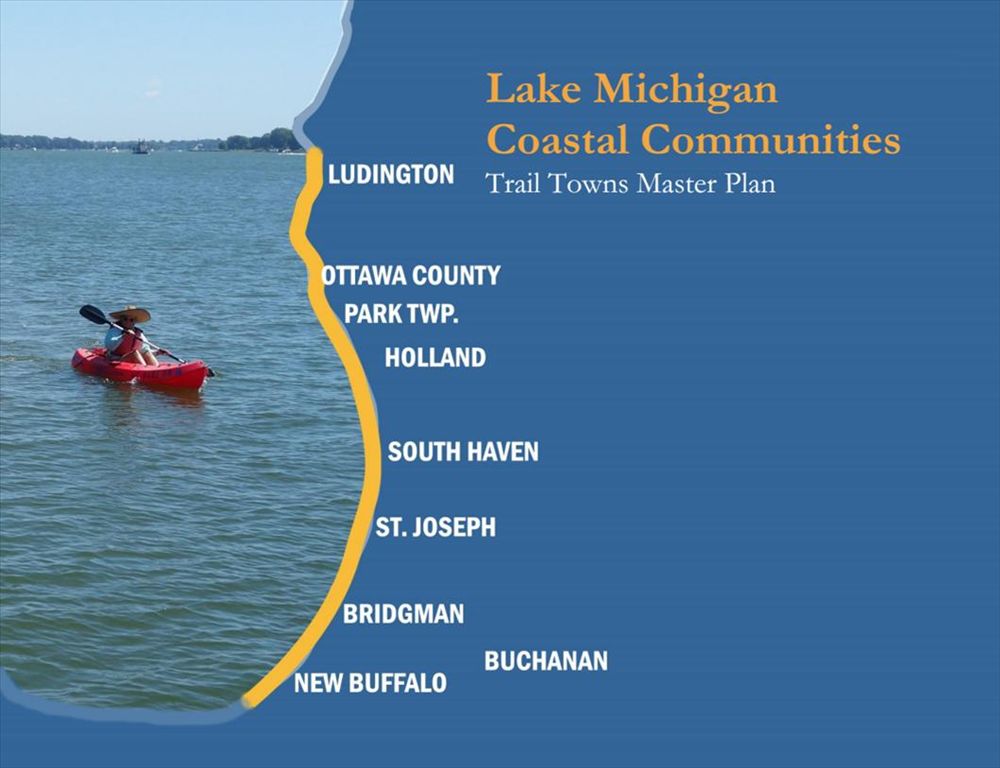
Lake Michigan Coastal Communities Trail Towns Master Plan (Full report large file)
Appendices for SW Michigan Communities
New Buffalo
South Haven
Other Appendices
Business Checklist
Complete Streets Policy
Universal Water Trail Launch Features
2020 Southwest Michigan Planning Commission. All Rights Reserved.
community based tourism, project management and consultancy, with strong roots in local communities
The Long Trail is a social enterprise specializing in community based tourism and social development projects. The organization was founded in 2021 by combining existing projects and activities, some dating back as far as 2010. For about twelve years, the founders of The Long Trail have been developing, organizing, and marketing community based tourism programs in countries all over world, and managing social development projects with local communities, mainly in East Africa.
Sustainable development
Community based development is not a simple process; it requires time and effort to engage with the communities to help them take responsibility for their role and gain a position in the value chain; there is no shortcut to success. For that reason, we have chosen the name The Long Trail , symbolizing a hiker who deliberately choses the longer route instead of the shortcut, but on the way enjoys the experience and will arrive at the destination with much more satisfaction. For us, this symbolizes that we are a social enterprise. We measure the success of our organization not only in terms of financial gains, but in terms of social impact. We choose to involve local communities rather than limit ourselves to standard business models in tourism. This allows us to create more value for the communities we work with, and ultimately, we arrive at our destination: sustainable development through a sustainable enterprise.
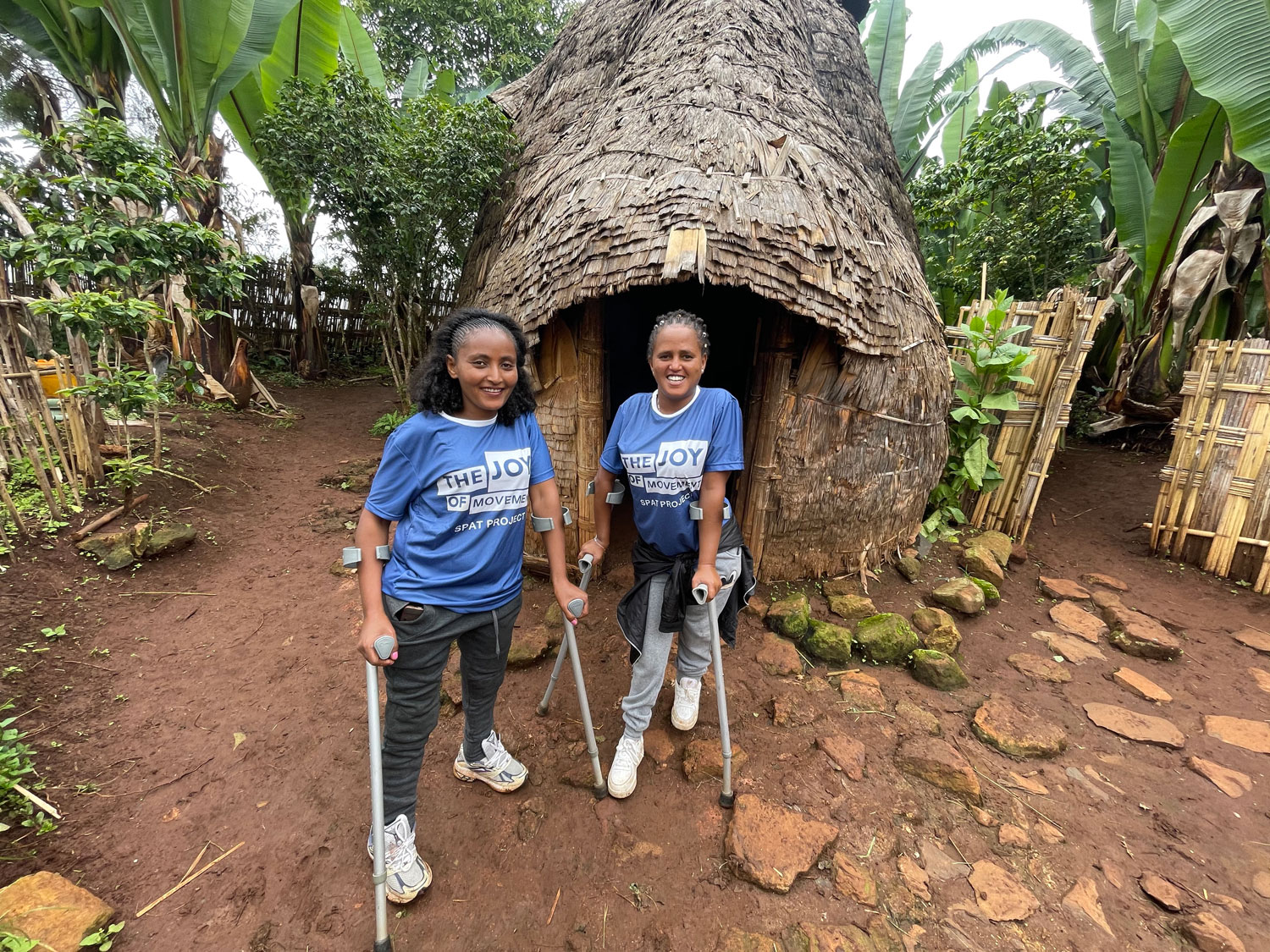
The key to success: Specialization and organization
The Long Trail has two main specializations from which we develop and manage our brands and projects. Our travel brands aim to develop, manage, and market community based tourism programs for specific destinations and niche target groups. Our community based nonprofit development projects utilize our experience, connections and trust in the local community to be durable and effective.
For a schematic overview of our activities, you can download our company profile (PDF)
Connect and cooperate
We have the ambition to grow into one of the world's leading social enterprises, specializing in community based tourism and connected development projects. Next to successfully developing commercial and nonprofit activities, we also intent to become an international knowledge center to share our knowledge, experience and expertise in the community based tourism and small scale sustainable community development. We are actively looking for cooperation and collaboration with new partners who share our philosophy and goals and are looking forward to have meaningful conversations about the fields we work in with anyone who is interested.
Our projects
Small scale sustainable community development, with a focus on vulnerable people.
One arm of The Long Trail focuses on small scale community development projects. Typically, these are nonprofit projects with vulnerable groups aimed at societal development and creating opportunities for work and income.

SPAT project
Since 2018, The Long Trail has been the leading force behind the Sports and Physical Activity Trainer (SPAT) project, aimed at providing young people with a disability the necessary education to become professional sports instructors. The project was originally set up in Ethiopia by a number of Dutch NGOs; in 2019, The Long Trail, with our strong ties to the local community, has taken over the management of the project and further expanded it to Kenya, allowing us to build on the experience and achieve economies of scale.
Kwale Deaf Centre
The Long Trail is responsible for the management as well as the programs at the Kwale Deaf Centre, a community centre for deaf people in the southeast of Kenya. At the moment, about 20 deaf youth live here and participate in the social support programs we provide. We are currently developing community based travel programs in Kwale county and have set up a guesthouse facility for tourists in the town, providing employment to some of the center's youth. Learn more about the Kwale Deaf Centre on YouTube
Lalibela Social Fund
The Lalibela Social Fund provides monthly financial assistance to impoverished elderly and disabled people in the city of Lalibela in Ethiopia. It is an economic experiment, researching the effects of social security for vulnerable people in one of the poorest areas in the world. The project has been initiated by the New York State Intergenerational network (NYSiGN), an NGO from the United States, for which The Long Trail provides the local management and coordination. Learn more about the Kwale Deaf Centre on YouTube
The Ethiopia Deaf Experience
A group of deaf actors in Ethiopia provides workshops and performances to increase awareness about deafness, deaf culture, and sign language. The group gives workshops to individuals and tourists and offers a popular team building session to companies and organizations, as well as an adjusted program for children in school settings.
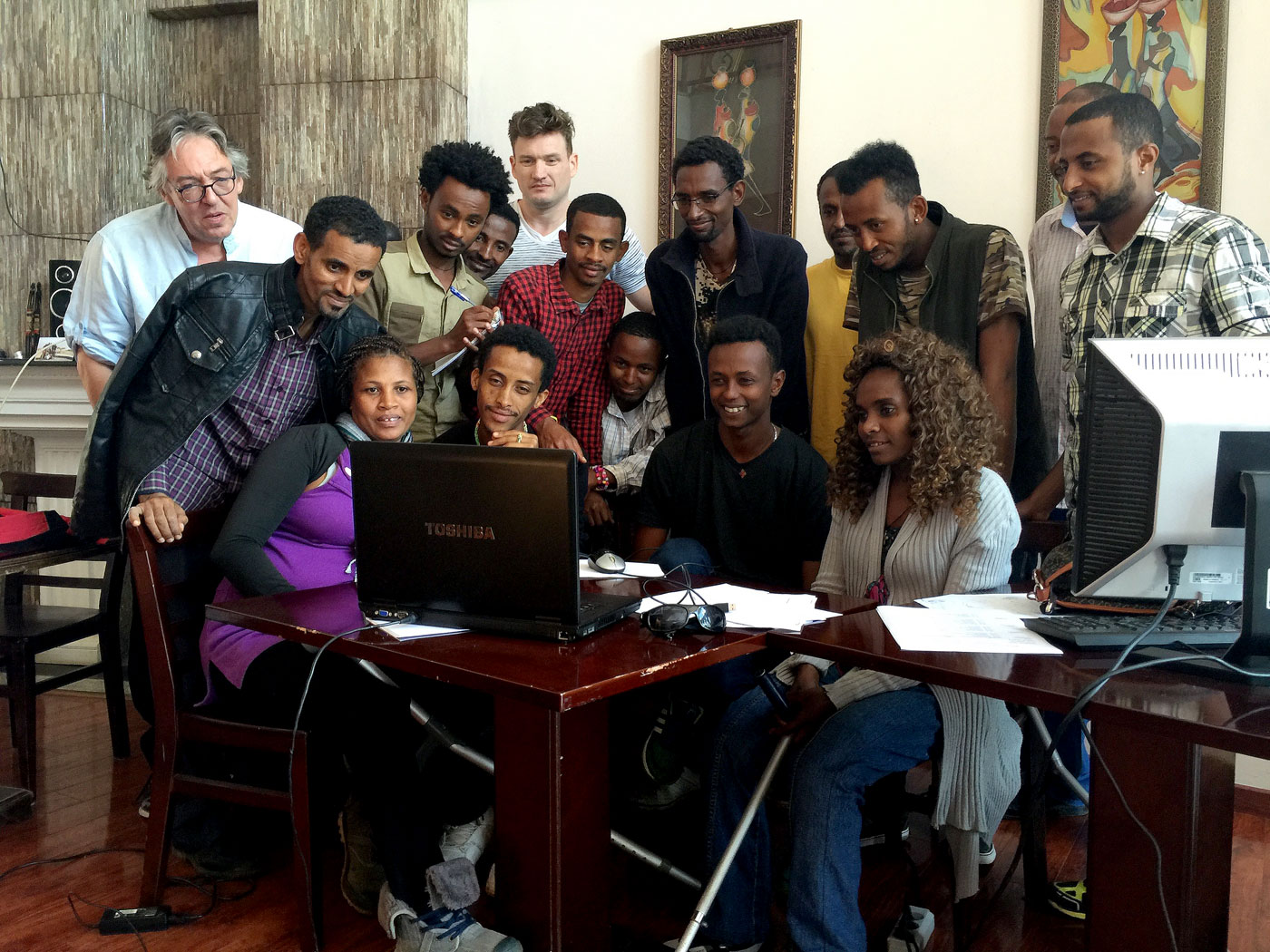
Travel Brands
Offering the traveling public truly unique experiences that they cannot find anywhwere else.
Why do we believe we have something to offer the travelling public when the market is already over-saturated with travel companies? Because the boutique experiences offered by The Long Trail are something you just can't find anywhere else.
In Eastern Africa, we have a history of trust and accomplishment, leading experience, insight in and deep connections to the local population that other travel companies just don't have. We have invested the time and resources in the communities we target and delegate responsabilities to local people, who become stakeholders in our success. By the same token, we lean into our long standing relationship with the traveling public, such as the deaf community, offering unique travel experience that reward us with a loyal following.
Below you find an overview of the brands we use to connect the traveling public to local communities.
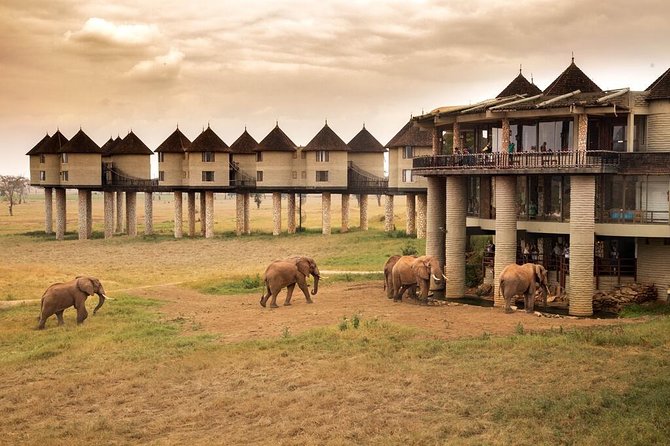
Wesemann Travel is the first company in the world that focusses on community based travel for deaf and hard of hearing people, with sign language as our primary language. The founder of The Long Trail, mr Jos Wesemann, learned sign language as his primary language from his parents, who are both deaf. He realized early on that being fluent in sign language is a great advantage when travelling, since the language - albeit with variations - is used by deaf people across countries and cultures. Based on this insight he started sign-language based tours in 2010 and Wesemann Travel into a succesful company. Today, Wesemann Travel is the leading travel brand for deaf and hard of hearing and is active in over 20 countries worldwide, and expanding.
Visit the website of Wesemann Travel
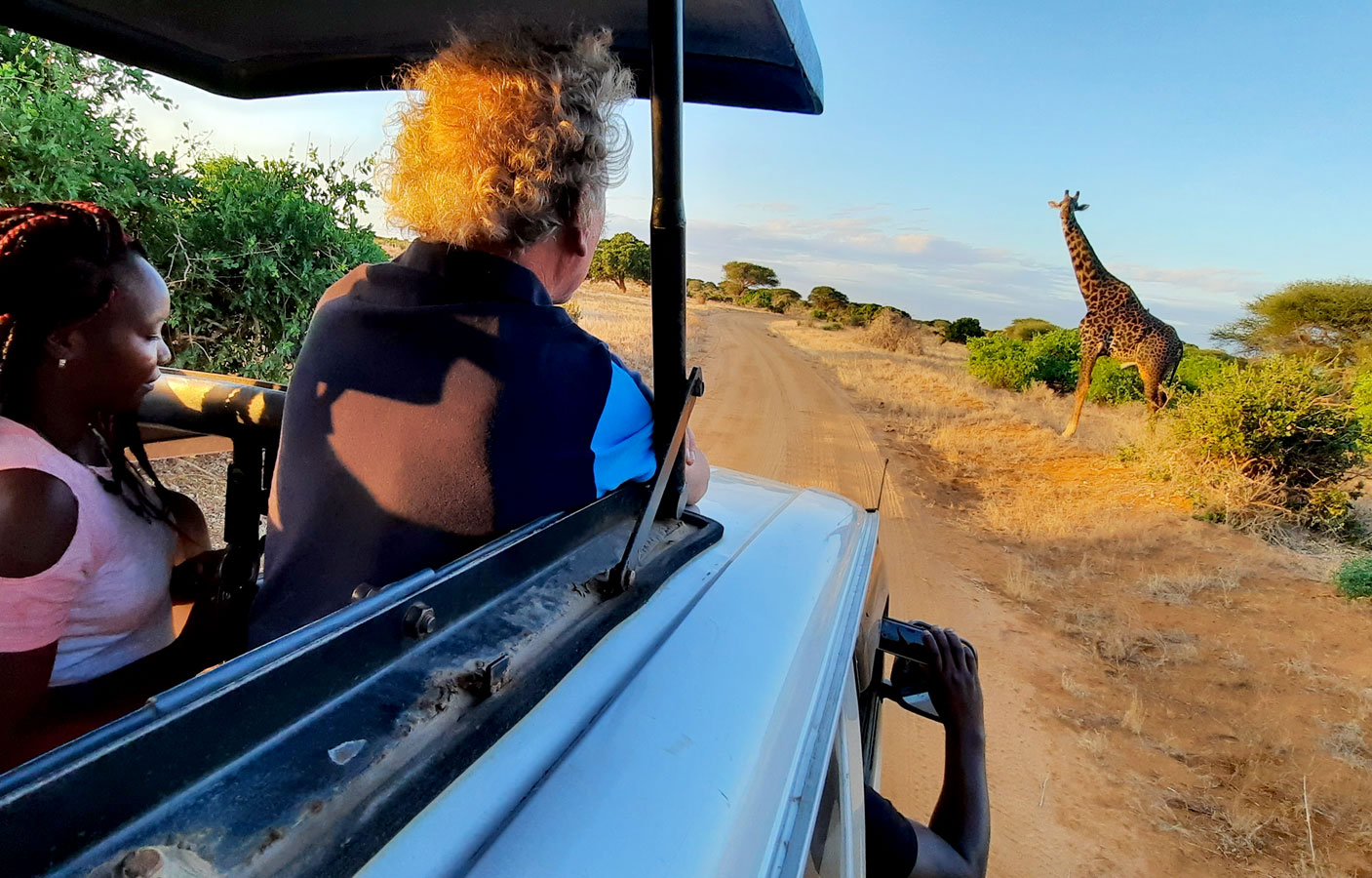
Umoja travel was set up in 2020 to offer community based tourism programs in Kenya and Tanzania, two African countries that are highly popular with the traveling public in Europe and the United States. Umoja is currently developing programs throughout the region, with the emphasis on the area of Kwale in the southeast of Kenya, where The Long Trail is involved in several community based social development projects. Umoja has been experimenting with different kinds activities and programs throughout the pandemic years of 2020 and 2021 and preparing for a rapid expansion in 2022.
Visit the website of Umoja Travel
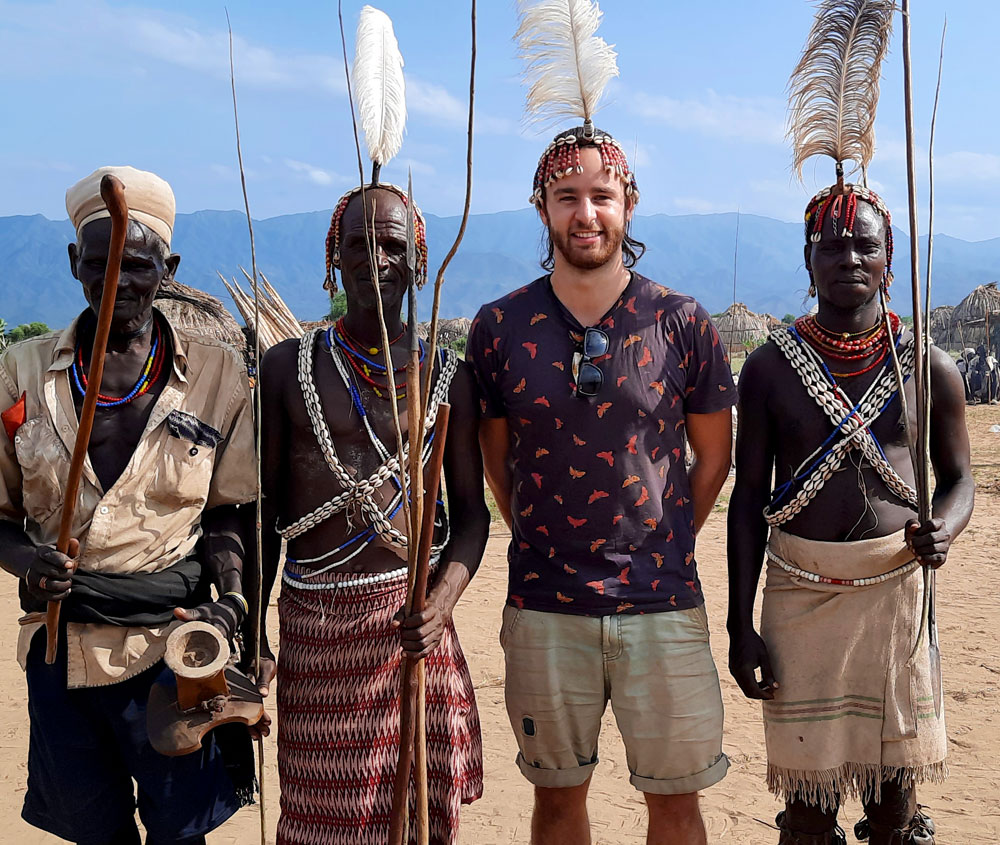
The Ethiopia Experience, or TEX for short, is a country specialist dedicated to community based tourism. True to the spirit of The Long Trail, it has developed programs accross the country, engaging different (niche) communities such as long-distance runners, coffee farmers and coffee connaisseurs, religious communities and the members of specific tribes. We work directly with the local communities and with local tour operators and other suppliers to develop and manage our programs. Since 2015, we have accommodated well over a thousand guests and we are currently preparing an ambitous expansion of the brand for the post pandemic period, with new programs and highly targetted marketing.
Visit the website of The Ethiopia Experience
© 2021, The Long Trail. Alle rechten voorbehouden
Academia.edu no longer supports Internet Explorer.
To browse Academia.edu and the wider internet faster and more securely, please take a few seconds to upgrade your browser .
Enter the email address you signed up with and we'll email you a reset link.
- We're Hiring!
- Help Center

Community-based tourism development : a Hiking Trails perspective

Community-based tourism (CBT) is an alternative form of tourism development that aims to contribute to holistic development of disadvantaged community members. The relevance of CBT is growing and while CBT development may have many opportunities, it also boast various and relevant challenges. Thus, specific CBT development models are required to enhance CBT chances of success. Hiking trails are seen as a possible option to local development specifically, but not exclusively, to rural areas. In addition heritage tourism is also seen as a relevant tourism sector. In this context, this paper proposes a specific model for CBT link to hiking trails development as trails mostly based on the local cultural and natural assets. The paper that is based on desk research intends to contribute to the tourism literature in relation to community development by specifically proposing a model of CBT hiking trails development. After an introductory section, the paper will explore matters related to C...
Related Papers
Prospects and Challenges of Community-Based Tourism and Changing Demographics
ishmael mensah
There has been a growing interest among academics and practitioners regarding community-based tourism (CBT) since it emerged as an alternative to conventional tourism. This interest has been particularly significant in developing countries where natural and cultural resources for CBT abound. Community-based tourism has been presented as a form of tourism where the local community has substantial control over, and involvement in its development and management, and a major proportion of the benefits remain within the community' (WWF, 2001). However, for local communities to derive the desired outcomes from tourism development, their participation in tourism development is imperative (Blackstock, 2005). CBT involves a bottom-up participatory approach to tourism development. It is a form of tourism where decision-making and control of the pace of tourism development are vested in local communities. CBT also serves as a tool for the conservation of the environment, as the revenue derived from tourism provides an incentive for the conservation of natural and cultural resources by local communities. Thus, there is the recognition that CBT can create better linkages between conservation, economic development and sustainable development (Stronza & Godillo, 2008; West, 2006). In order to use tourism to stimulate growth, communities should ensure that it supports local economic development, promotes equitable participation by community members, is ecologically sustainable, reduces negative environmental impacts, conserves the culture of the community and educates visitors about culture and nature (Asker et al, 2010). However, the benefits of CBT do not only accrue to the local community, but also tourists who seek individualistic, participatory, sustainable, and distinctive spiritual and cultural features of the community (López-Guzmán, Borges, & Castillo-Canalejo, 2011). Despite the importance of CBT for community development, it has been observed that policies and practices adopted by governments have concentrated power and resource control in the state. This erodes traditional tenure and resource management
Emerging Trends in Social Science Research; Edition: First; Chapter: 6; Publisher: Archers & Elevators Publishing House, Bangalore, India; ISBN: 978-93-90996-07-0
Arnab Gantait
Tourism has long been viewed as a sector capable of improving people's economic welfare. Many experts however argue that tourism does not always guarantee a higher income for the communities as on several occasions while designing a tourism development blueprint, “community participation” has received little attention. In this context, one type of tourism, which is directly related to “community participation”, is Community-Based Tourism (CBT). CBT is increasingly gaining popularity in developing nations; as it is theorized that, such a tourism approach can strengthen the local economies, empower the local communities, optimize linkages, limit leakages, promote destinations, as well as, can provide a higher quality of visitor experience at tourist destinations. Though CBT projects have benefited many underserved communities in many regions, a good number of CBT efforts have also failed to produce the positive effects and therefore, cannot claim success. Hence, the basic concepts, and various aspects of CBT, and its challenges must be thoroughly understood. This paper focuses on this very aspect. This study is a conceptual research. It takes a qualitative approach to explain the concept of CBT, its benefits, and the challenges that make CBT endeavors less impactful at many places. The data for this study is collected from both primary and secondary sources. This paper will raise awareness of Community Based Tourism (CBT) that may help the communities, as well as, the tourism planners and policy-makers to successfully implement the CBT projects/initiatives; so that it can be a sustainable solution for a better community life and at the same time, ensure visitor-satisfaction at the tourist destinations.
Oliver Mtapuri
Journal article
Most. Habiba
Community-based tourism (CBT) has often been viewed as a community development tool for alleviating poverty and improving community lifestyle standards. The mention of community-based tourism was seen in the 1970s and started to get attention in the 1990s. In community-based tourism, the locals have full authority and ownership of tourism businesses, ensuring that tourism's financial benefit stays in the local economy. Community-based tourism is associated with other forms, such as pro-poor, sustainable, alternative, and rural tourism. This paper presents an overview of community-based tourism with the help of a rigorous search of secondary information. The findings of this study include the concept of CBT, factors facilitating CBT, challenges of CBT development, and the role of CBT in the development of the local community. This paper expounds that the development of community-based tourism has a massive contribution to local employment creation, increase in local income, improved knowledge and skill of locals, and increase the local standard of living.
Community-based tourism (CBT) offers both opportunities and challenges in the quest for holistic community development. The evolution and development of CBT projects can follow different trajectories. This conceptual paper’s main contribution is the formulation of a comprehensive model of the development of CBT. The model suggests that CBT projects can be initiated from within and outside the community by the private, public and non-governmental sectors or a combination of these using a topdown or bottom-up approach. It also posits that CBT projects can take a formal or informal character depending on the conditions leading to their initiation. The paper highlights the benefits and constraints to the scaling up or down of operations linked to informality. It supports further research in analyzing the various aspects associated with the shift from formality to the informality of CBT projects and vice versa and the relationship with CBT development and holistic community development.
Winsar Publishing Co. Dehradun, Uttrakhand, India
Dr. Aruditya Jasrotia , Shalki Manhas
Community of a destination is considered to be the most important stakeholder when it comes to developing tourism in the particular area. The locals are the ones who know their place the best. They are the people who should be given the prime power to decide whether or not tourism related activities should be practiced in their area. Community based tourism approach is such a bottom up approach which imparts the chief authority to the local community where the members in the community come together to take a collective decision on initiating tourism practices in their area and get the maximum benefit out of it. WWF defines community based tourism as " the form of tourism where the local community has substantial control over and involvement in, its development and management, and major proportions of the benefits remain within the community ". CBT is therefore the type of tourism managed by the local community anticipated to provide extensive community benefit. Every kind of tourism eventually should be community based as leakage of income generated by tourism and loss of authentic cultures is the main issue of practicing tourism in a destination. The community based tourism works towards developing the local communities of a destination through engaging them decision making and profit sharing through the tourism related activities in their area. The term community development according to UNESCO is defined as the term which describes the processes by which local communities can elevate their standard of living. The process may include organization of services like education and awareness, social welfare, improvement of agricultural practices, development of small scale industries.
Emmanuel Seni
Journal of physics
nyoman dewi
Harold Goodwin
Faly Albert randrianarivony
RELATED PAPERS
João Alexandre Fernandes Senhorini
Josias Flores
Franz Knieps
Eabhann O'Connor
Libro de investigación: Educación y Pedagogía, 2020 “Universidad –sociedad: escenarios socioculturales en relación dinámica desde la actividad”
Lisandra Suárez Fernández
Anais do Congresso de Iniciação Científica da Unicamp
Rosana Icassatti Corazza
Acta Scientiarum. Technology
Selma A. Ribeiro
dennis vanderwerf
Diabetology & Metabolic Syndrome
Agroforestry Systems
pedro santos
Ulf Johansson
hajar yaghoobi
Egyptian Journal of Chest Diseases and Tuberculosis
Applied and Environmental Microbiology
Mary DeFlaun
Lecture Notes in Computer Science
Moshe Vardi
ANALELE UNIVERSITĂȚII DIN CRAIOVA SERIA ȘTIINȚE FILOLOGICE LIMBI STRĂINE APLICATE
Ancuța Ionescu
Arab Gulf Journal of Scientific Research
Prof. Adel I . Al-Alawi
Danilla Aguiar
Ethik im Kontext individueller Verantwortung und militärischer Führung
Thomas Schirrmacher , Edwin R Micewski
Nicholas Barone
Hassan Chaib
Soil Science Society of America Journal
Cecilia Turín
Call Girls in Ajmeri Gate
preeya khan
Journal of Physics: Conference Series
Esther Akinlabi
RELATED TOPICS
- We're Hiring!
- Help Center
- Find new research papers in:
- Health Sciences
- Earth Sciences
- Cognitive Science
- Mathematics
- Computer Science
- Academia ©2024

Hello Positive Mindset
Community Connection: 10 Inspiring Journeys Through Community-Based Tourism Projects in 2024
Posted: April 22, 2024 | Last updated: April 22, 2024
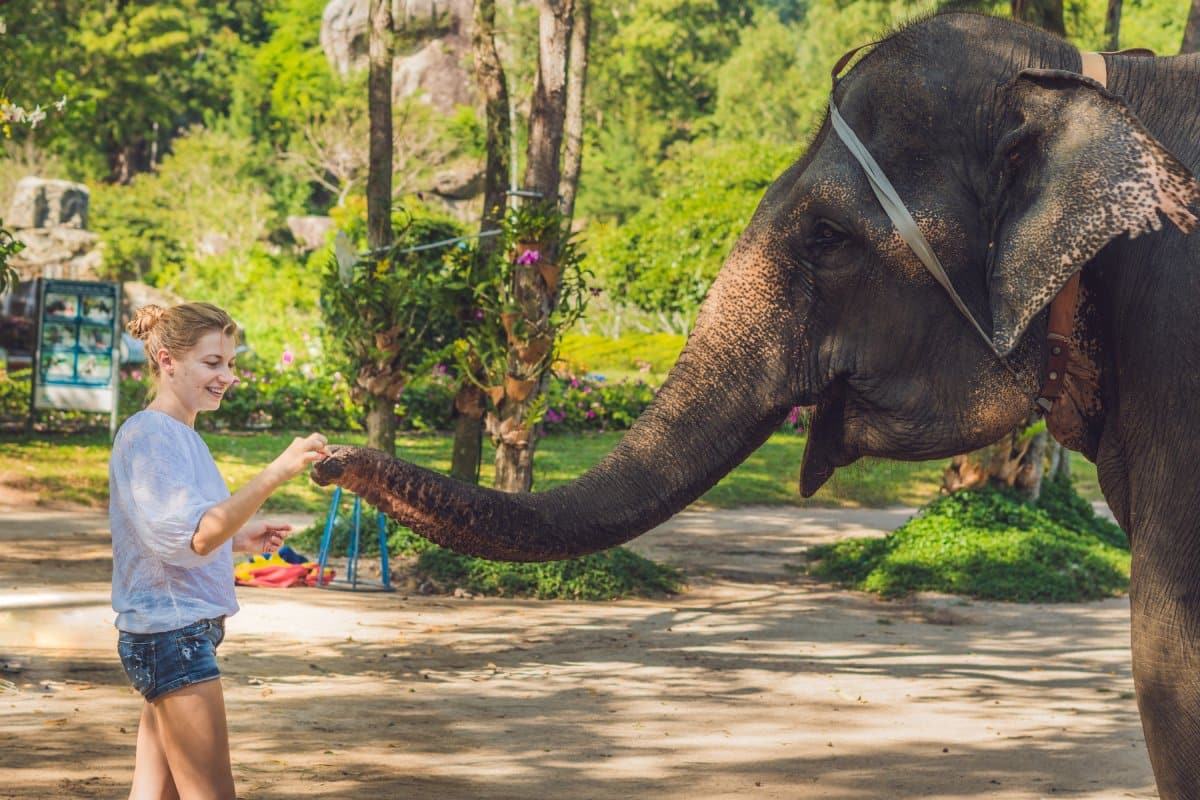
Travel today transcends traditional sightseeing, evolving into a more immersive and impactful experience. Community-based tourism projects offer a unique opportunity to engage with local communities, understand their culture, and contribute positively to their development.
This guide explores various destinations where you can participate in and support these initiatives. From helping with conservation efforts in Africa to learning traditional crafts in Southeast Asia, each project allows you to connect deeply with local cultures while supporting sustainable tourism practices.
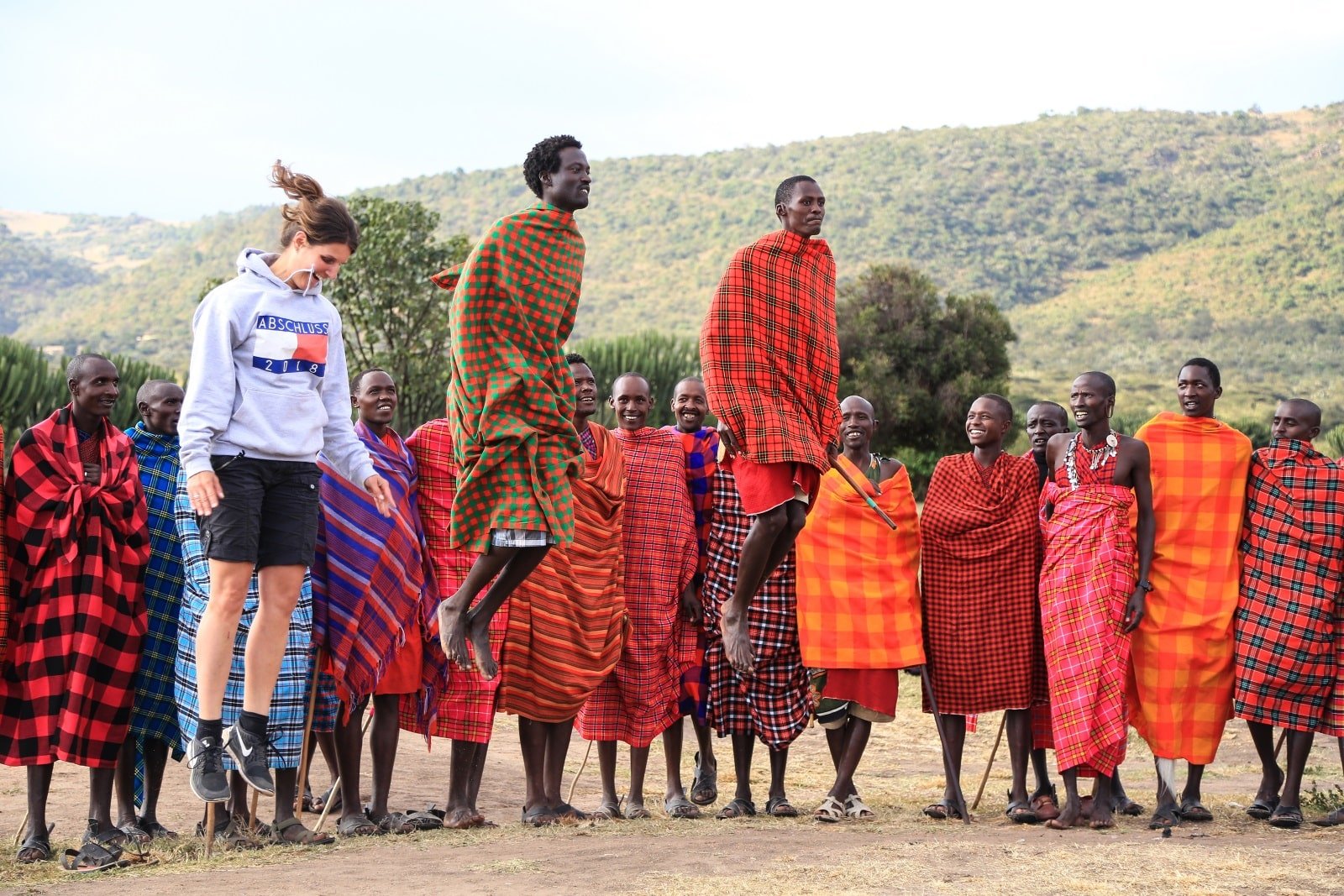
1. Conservation Efforts in Kenya
In Kenya, community-based tourism takes a front seat in wildlife conservation efforts. Projects like the Maasai Mara Wildlife Conservancies involve local communities in protecting the region’s iconic wildlife. As a visitor, you can participate in guided safaris led by local Maasai guides who share their in-depth knowledge of the ecosystem.
Your visit contributes to the conservancies’ efforts to protect species like lions, elephants, and rhinos. Additionally, many of these projects offer cultural experiences, such as village visits and traditional dance performances, providing a holistic understanding of the Maasai community’s way of life.
Insider’s Tip: Opt for lodges or camps that are part of the conservancy program, ensuring your stay directly benefits local conservation efforts.
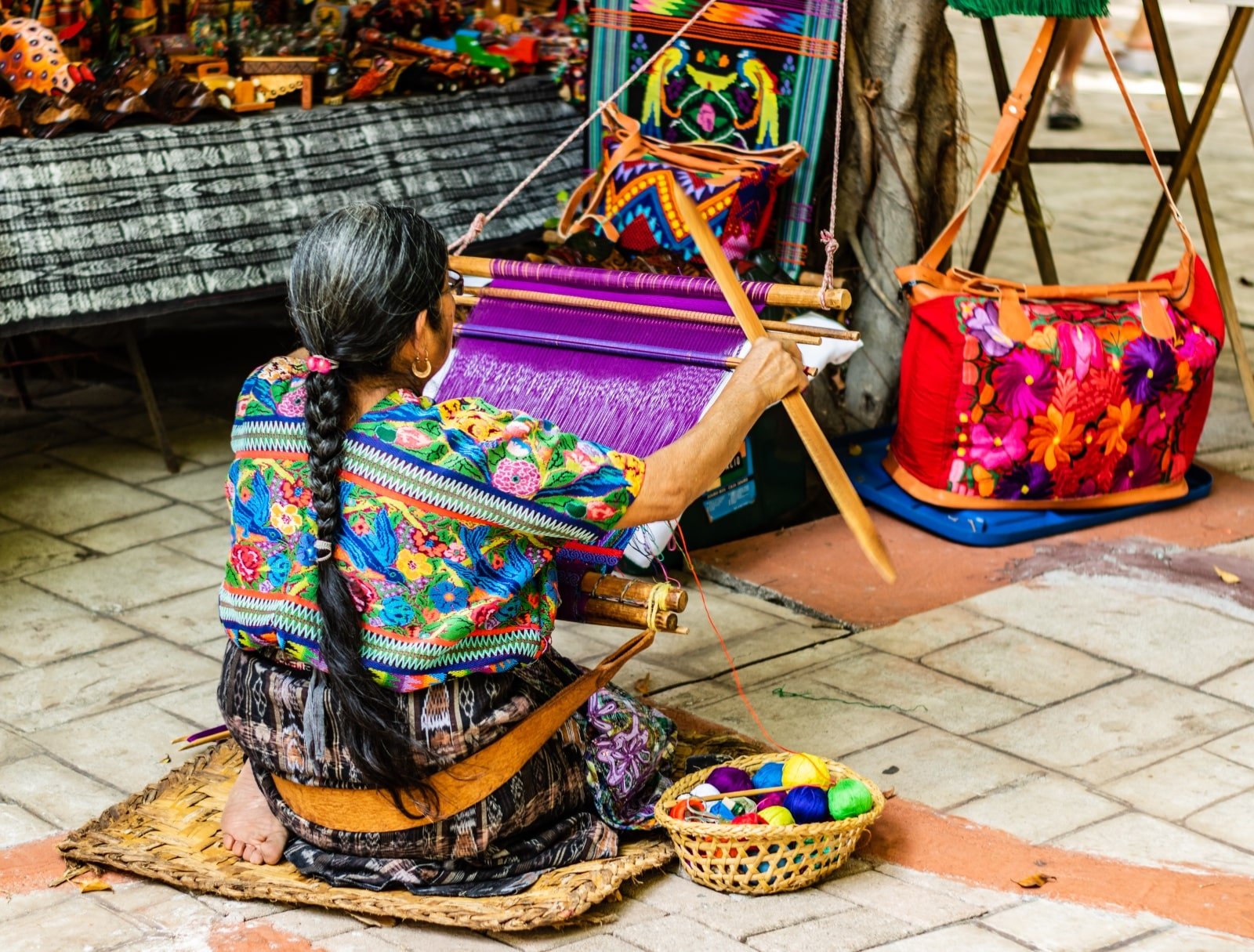
2. Traditional Weaving in Guatemala
Guatemala has many community-based tourism projects focus on preserving traditional arts and crafts. Towns like San Juan La Laguna on Lake Atitlán are known for their textile cooperatives. Here, you can learn about the art of weaving from local artisans, understanding the significance of their traditional techniques and patterns.
Participating in these workshops provides you with a unique souvenir and supports the artisans and their craft. These cooperatives often use natural dyes and sustainable practices, making your participation a support for eco-friendly initiatives.
Insider’s Tip: Engage with the artisans, ask questions about their craft, and purchase directly from them to ensure they receive fair compensation.
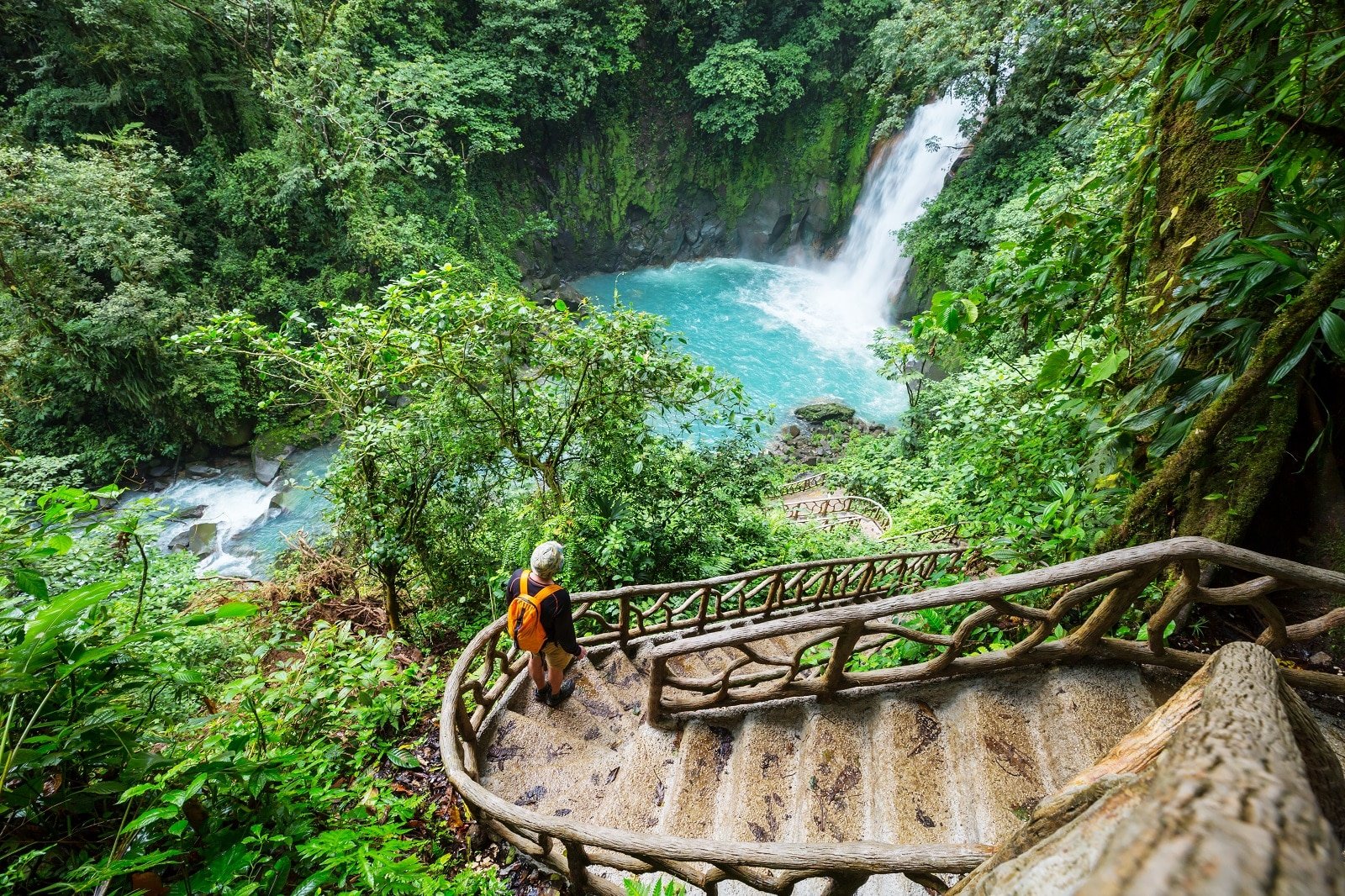
3. Eco-Tourism
Costa Rica, a pioneer in eco-tourism, offers a plethora of community-based tourism projects that focus on environmental sustainability. In areas like Monteverde and Tortuguero, local communities are deeply involved in preserving their unique ecosystems. You can participate in guided rainforest hikes, wildlife spotting tours, and even sea turtle conservation programs.
These experiences are led by local guides who provide invaluable insights into the biodiversity and conservation efforts of the region. Your participation in these tours enhances your understanding of environmental conservation and directly contributes to the livelihoods of local families and the protection of natural habitats.
Insider’s Tip: Choose tours and accommodations that are certified by the Costa Rican Tourism Board for their sustainability practices.
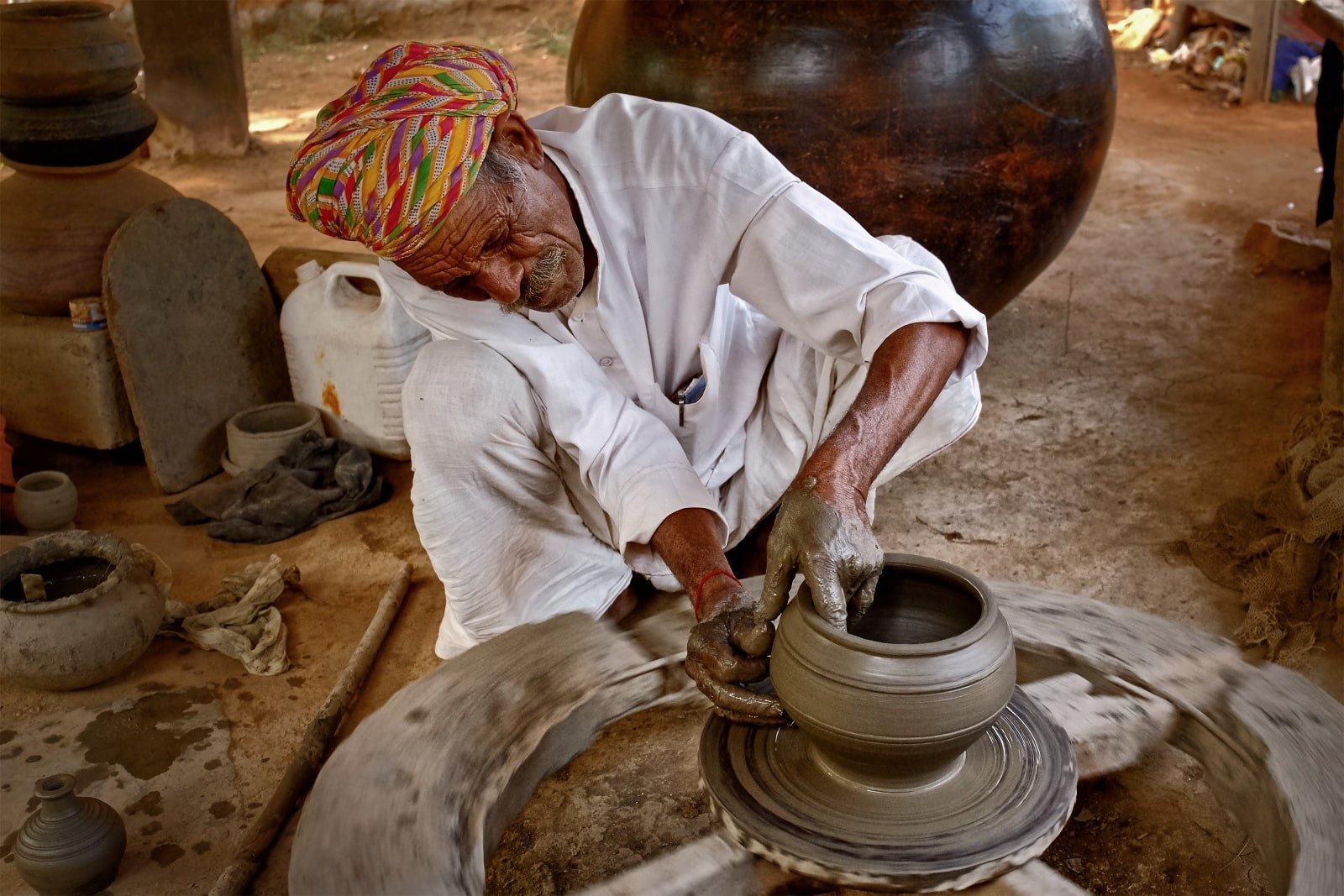
4. Cultural Immersion in Rajasthan, India
Rajasthan, India, offers a rich tapestry of community-based tourism experiences that allow for deep cultural immersion. Projects in villages like Chandelao and Barli enable visitors to experience the rural lifestyle of Rajasthan. You can participate in activities like cooking classes, traditional craft workshops, and village walks.
The locals curate these experiences, offering an authentic glimpse into their daily lives and traditions. By engaging with these communities, you enrich your travel experience and contribute to the local economy and the preservation of cultural heritage.
Insider’s Tip: Respect local customs and dress modestly during village tours and home visits.

5. Agro-Tourism in Tuscany, Italy
In Tuscany, Italy, agro-tourism is a growing trend where travelers can participate in sustainable farming practices. Local farms offer experiences like grape harvesting, olive picking, and cheese making. These activities provide an insight into the region’s traditional farming methods and food production.
Staying at a farm or agriturismo allows you to enjoy fresh, locally sourced food while supporting the local agricultural community. This form of tourism connects you with the land and its produce and promotes sustainable agricultural practices.
Insider’s Tip: Plan your visit during harvest seasons to participate in picking grapes or olives.
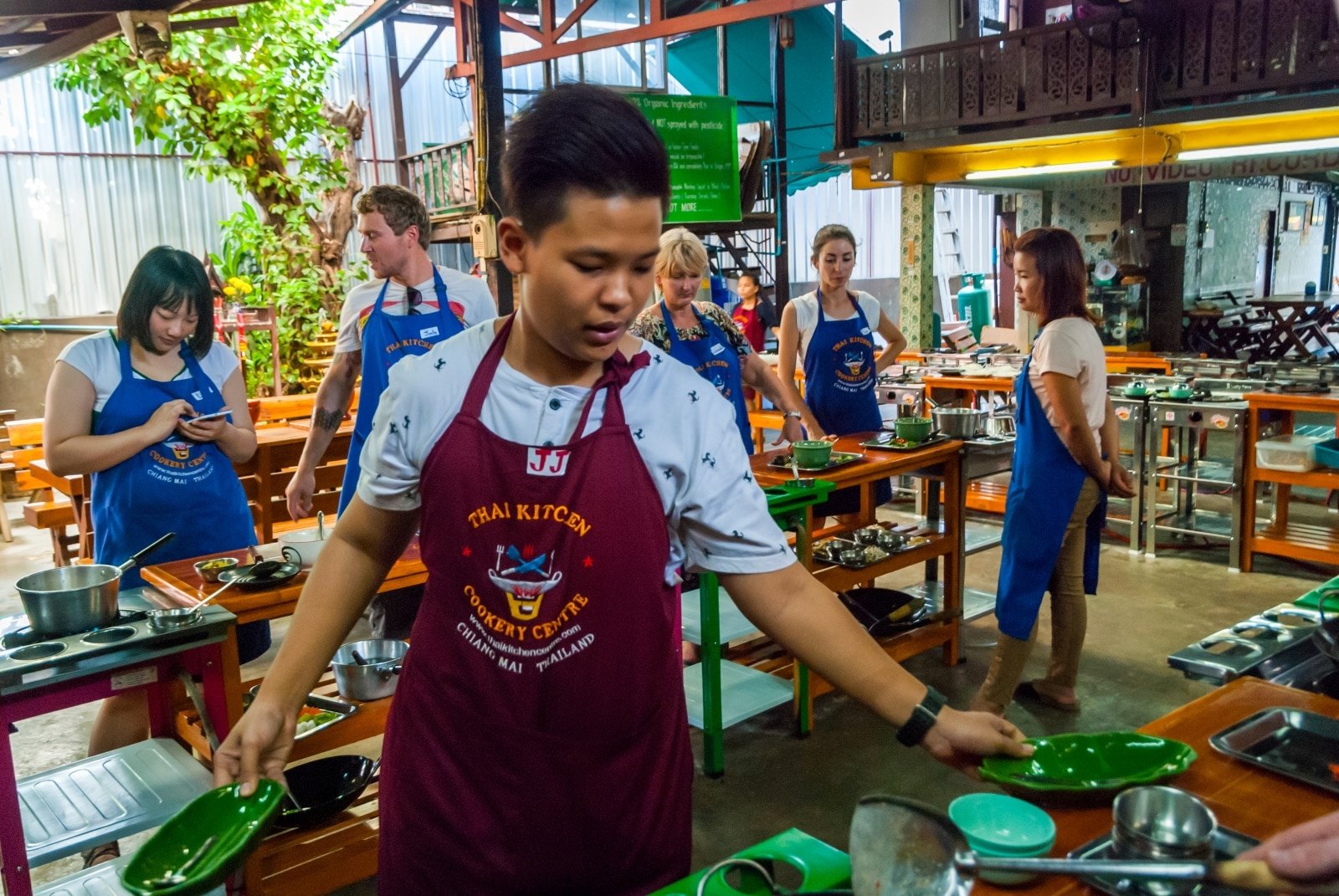
6. Community-Based Tourism in Thailand
Thailand offers a range of community-based tourism projects, particularly in the northern regions. Villages like Mae Kampong in Chiang Mai province specialize in eco-friendly tourism and cultural experiences. Visitors can engage in activities like Thai cooking classes, bamboo rafting, and learning about local tea production.
Staying in homestays and participating in daily village life allows for a genuine connection with the local community and supports their sustainable tourism initiatives.
Insider’s Tip: Learn a few phrases in Thai to communicate with your hosts and show respect for their culture.
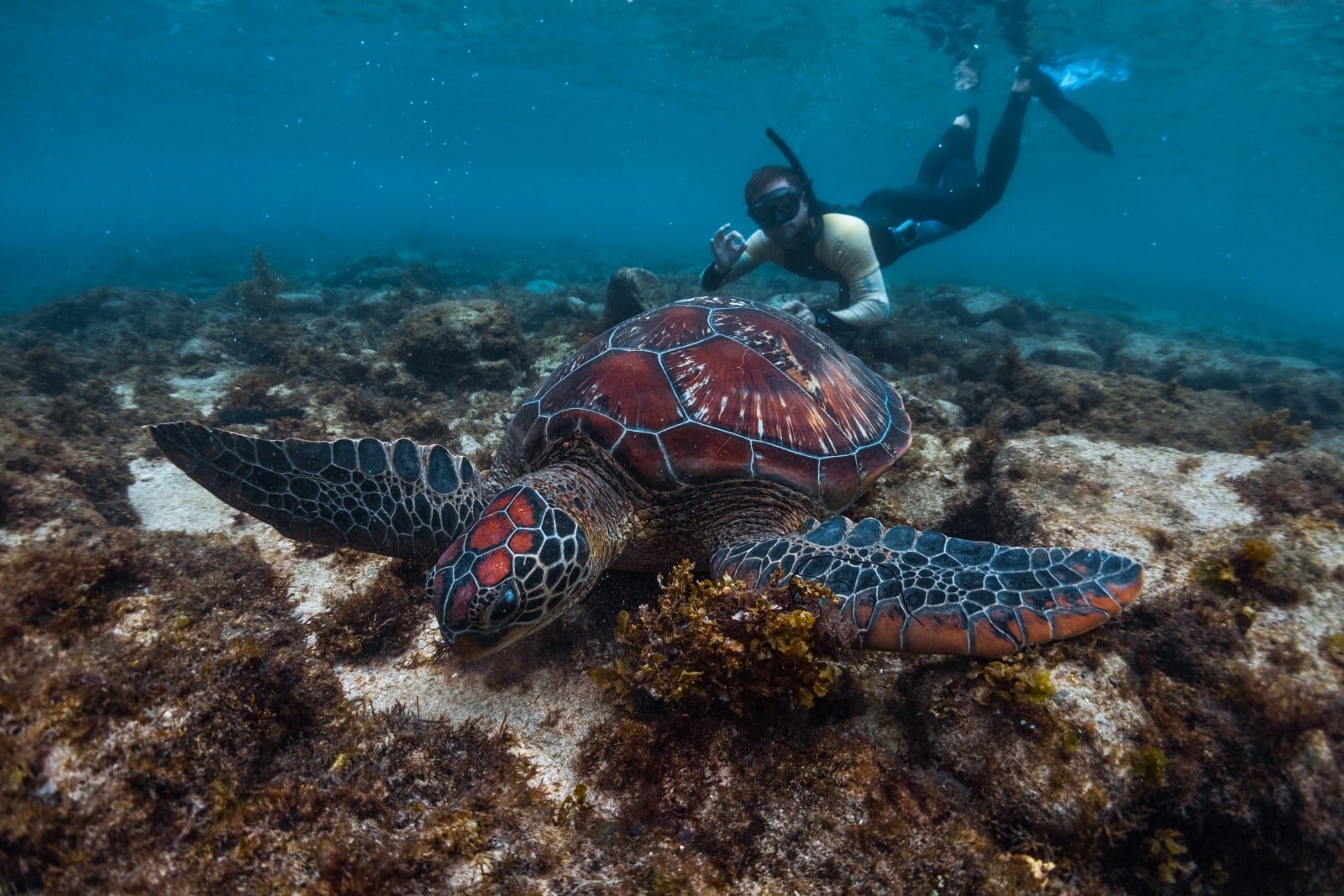
7. Supporting Marine Conservation in the Philippines
With its rich marine biodiversity, the Philippines has several community-based tourism projects focused on marine conservation. In places like Apo Island, you can participate in snorkeling and diving tours that are managed by the local community.
These tours offer spectacular underwater experiences and educate visitors about marine conservation and the importance of protecting coral reefs. Your participation in these activities support the local economy and funds conservation efforts, ensuring the preservation of these vital ecosystems for future generations.
Insider’s Tip: Always follow the guidelines provided by local guides to minimize your impact on the marine environment.

8. Participating in Wildlife Conservation in Botswana
Botswana’s approach to wildlife tourism involves local communities in conservation and tourism management. Projects like the Okavango Community Trust offer opportunities to engage in wildlife monitoring and sustainable tourism practices. Visitors can join guided wildlife safaris, bird-watching excursions, and cultural tours, all led by local community members.
This provides an authentic wildlife experience and ensures that tourism’s benefits are shared with the local communities, contributing to wildlife conservation and community development.
Insider’s Tip: Opt for accommodations and tours that are part of community trusts or conservancies.

9. Engaging in Community Projects in Peru
Peru offers unique community-based tourism experiences, particularly in the Andean regions. Projects in communities like the Sacred Valley involve locals in tourism, offering homestays, agricultural experiences, and cultural exchanges.
Participating in these projects allows you to learn about Andean culture, traditions, and sustainable living practices. Your involvement supports the preservation of local culture and provides economic benefits to the community.
Insider’s Tip: Show appreciation for your hosts’ hospitality and participate actively in daily activities to gain the most from your experience.
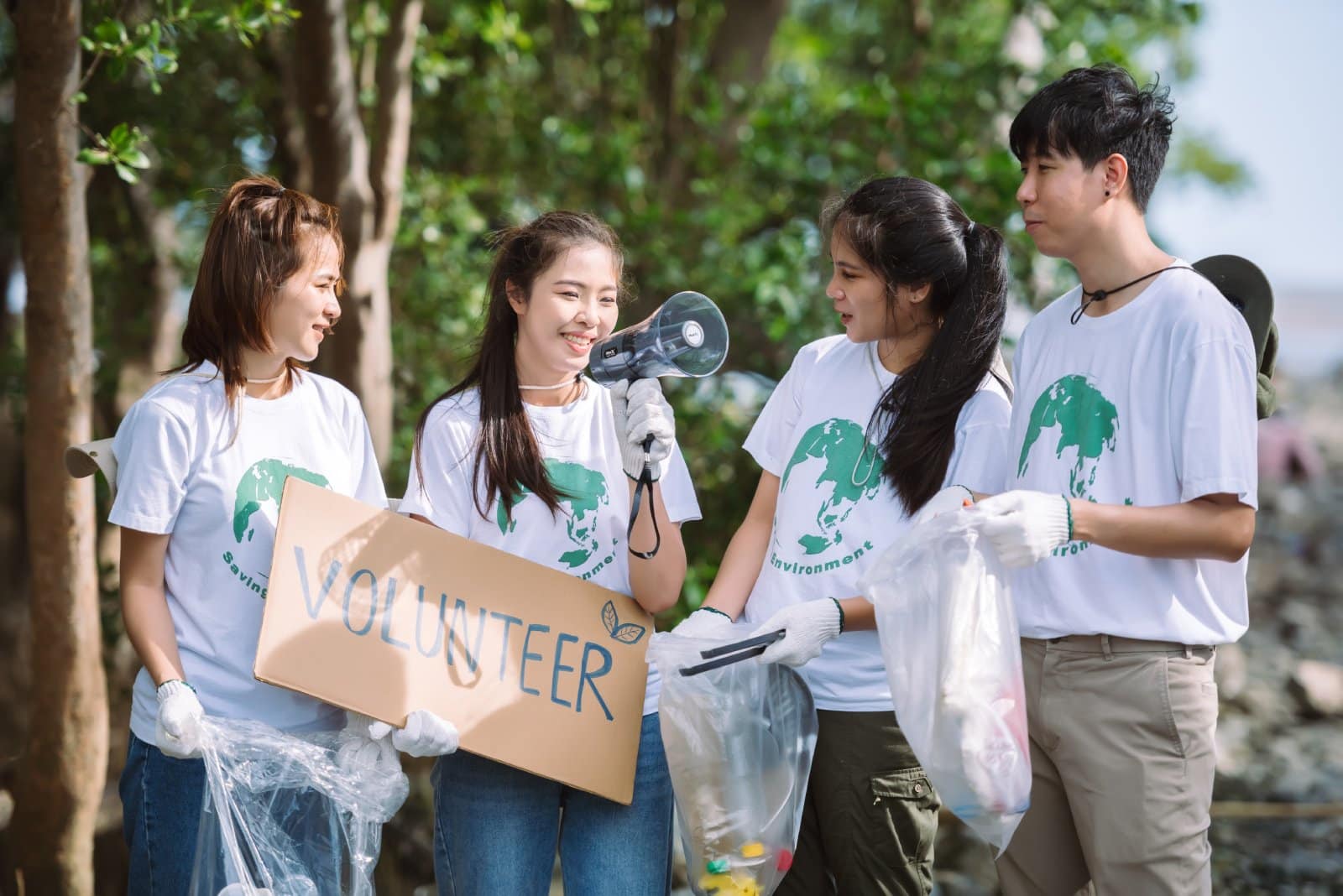
10. Volunteering in Community Initiatives Worldwide
Many destinations around the world offer volunteering opportunities in community-based projects. These can range from teaching English in schools to participating in environmental clean-ups. Volunteering allows you to contribute your skills and time to meaningful causes while immersing yourself in the local culture.
Insider’s Tip: Choose ethical volunteering projects that have a clear positive impact on the community.
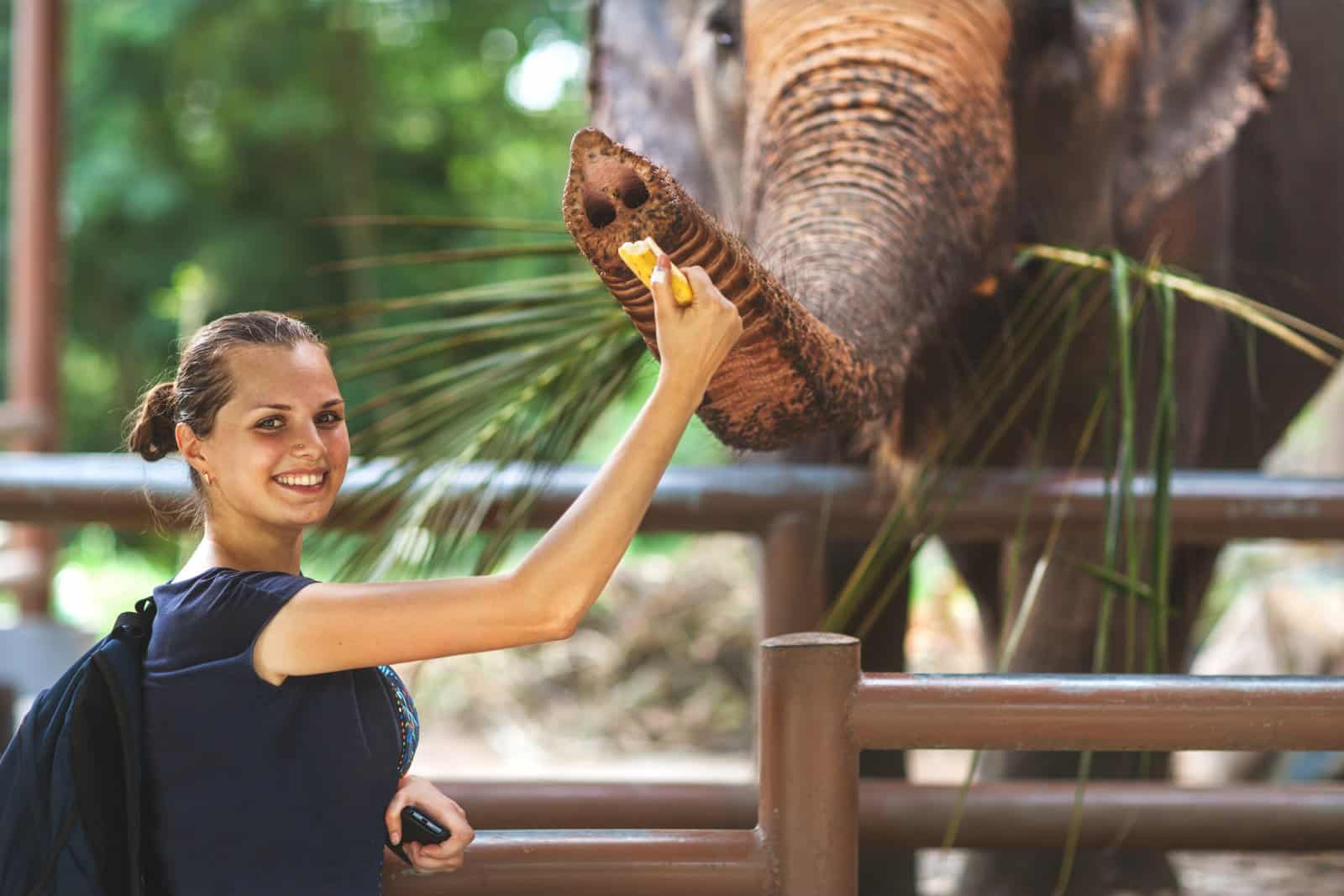
The Bottom Line
As you embark on your journey of community-based tourism, remember that your travel choices can have a significant impact. By participating in and supporting these projects, you’re not just a tourist but a contributor to sustainable development and cultural preservation.
Embrace these experiences with an open heart and mind, and you’ll find that the most rewarding travels are those that connect you deeply with the world and its diverse communities.
The post Community Connection: 10 Inspiring Journeys Through Community-Based Tourism Projects in 2024 first appeared on Hello Positive Mindset .
Featured Image Credit: Shutterstock / Elizaveta Galitckaia.
More for You
19 Things People Treat As Safe That Actually Are Pretty Dangerous
18 Vintage Boy Names No One Else Is Using Yet
A 20-year LeBron James NBA Playoffs streak is over
Putin Ally Draws Red Line for 'Legitimate Targets' in NATO Country
10 most ‘overpriced’ tourist attractions in the world – and three are in the US
Culver's Vs Five Guys: Which Burger Chain Is Better?
Six easy ways to lose an inch from your waist – in a week
People Who Don’t Show Empathy Usually Have These 18 Traits
Crumbl Is Finally Selling Smaller Cookies After Hearing Our Pleas
The films everyone should see at least once before they die, according to critics
Drew Barrymore Launched a Brand New Shade In Her Kitchenware Line, and It’s Perfect for Any Space
Michael Jordan taking notice of young NBA star
I Lost 50lbs With 3 Lifestyle Changes
The Only Way You Should Store Peanut Butter, According to SKIPPY
NYPD responds to AOC, says officers 'have to teach' anti-Israel mobs the 'consequences of their actions'
13 Things You Need to Order from the McDonald’s Secret Menu
Scientists have discovered the maximum age a human can live to

Netflix hit watched more than 21 million times in its first three days
Criminal Minds: Every Main Character's Fate at the End of the Series
These Are the Best Exercises to Burn Belly Fat As Fast As Possible
Secret Murders Alleged at Tourist Hotspot for Luxury Safaris
A wildlife tourism project has lost its funding after being tied to several extrajudicial killings, disappearances, and sexual assaults.

Shannon Vavra
National Security Reporter
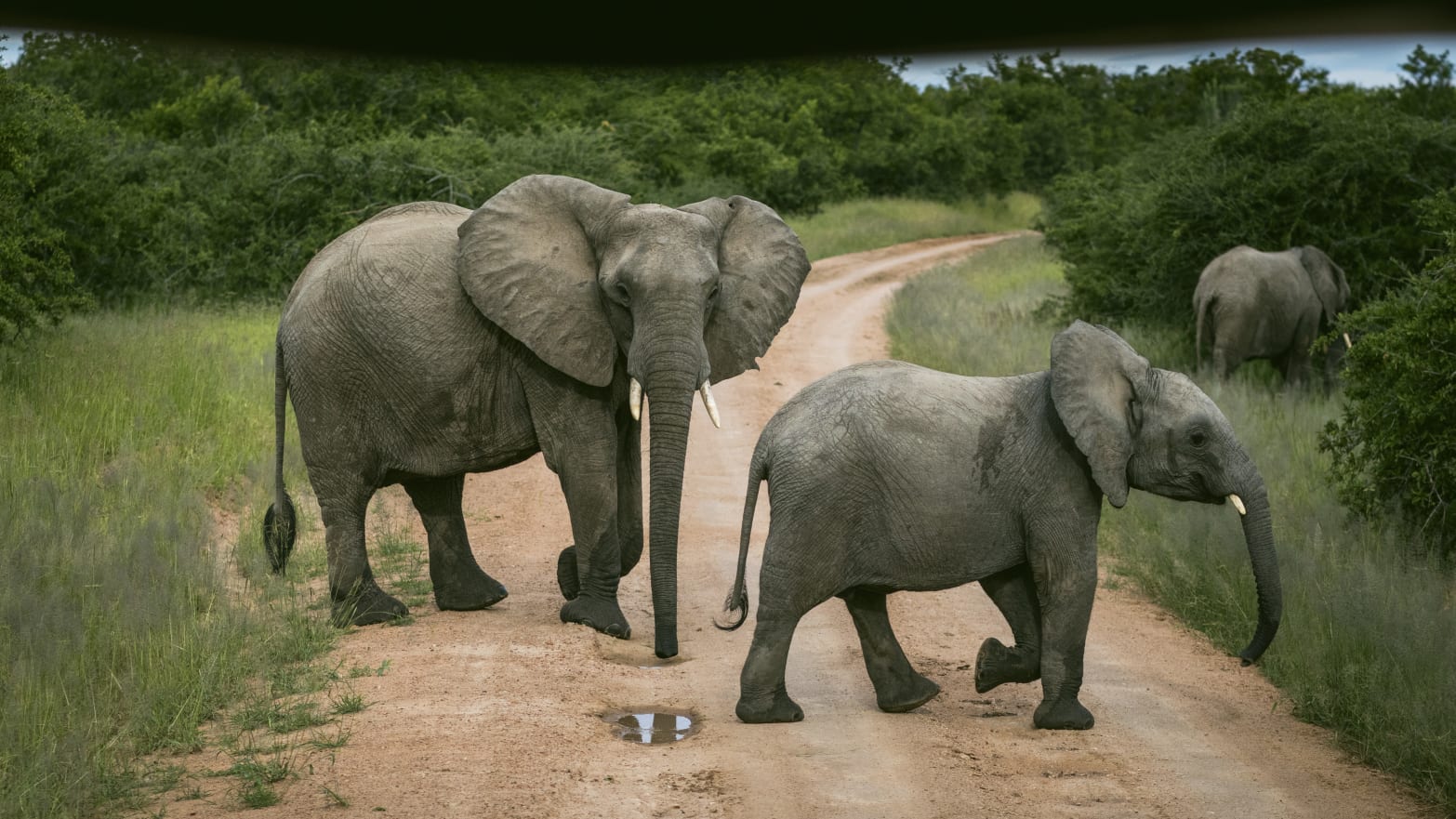
Christopher Loh
The World Bank has decided to pull funding for a controversial tourism project following accusations it has led to extrajudicial killings, disappearances, and the sexual abuse of local villagers in Tanzania.
Launched in 2017, the program aimed to improve the management of natural resources and tourism in Southern Tanzania, including Ruaha National Park (RUNAPA), which has been tied to a cascade of human rights abuses , according to the Oakland Institute, a California-based advocacy group.
The World Bank has already disbursed $100 million of the $150 million project, known as REGROW, according to The Oakland Institute.
The Tanzanian government plans included work aimed at nearly doubling the size of the park, the largest protected wildlife area in the country, from one million to over two million hectares. But the expansion plans have left the local villagers high and dry: The plan has included Tanzanian government efforts to forcibly evict over 21,000 people to expand the park, without providing villagers compensation or other land, according to The Oakland Institute.
“Communities report that park rangers, receiving funding through REGROW, have been implicated in murders of several villagers and numerous instances of violence since the project began,” according to a recent report published by the institute. “The World Bank, however, has turned a blind eye to the horrific abuses unleashed on the communities by choosing to not enforce its own safeguards.”
Even as local villagers have pushed back on the human rights abuses, luxury tourist options for visiting the park abound. From sunrise hot air balloon tours over the park with champagne celebrations, to camps with private lodges and spa attractions like pools, and massages—visitors from around the globe have continued to tour the park despite the allegations.
Wildlife reserves have continued to be a boon for Tanzania, pulling in billions of dollars of tourism revenue annually. But the ongoing issues with the REGROW project have raised questions about the rights of local villagers living near tourist attractions.
“This should be a wakeup call for the Bank’s leadership in Washington, D.C.—you cannot continue to ignore the voices of the people on the ground who are struggling to survive as a result of your so-called ‘development’ projects,” Anuradha Mittal, Executive Director of the Oakland Institute said.
The World Bank told The Daily Beast it had suspended further funding for the project after receiving information that “suggests breaches of our policies in the implementation of the REGROW project.”
“The World Bank is deeply concerned about the allegations of abuse and injustice related to the Resilient Natural Resources Management for Tourism and Growth (REGROW) project in Tanzania,” a World Bank spokesperson told The Daily Beast, adding that the World Bank will work with the authorities moving forward to try to ensure the project can “improve the lives of Tanzanians.”
The backpedaling from the World Bank comes after years of the Oakland Institute pushing against the project. Villagers have also taken steps to protest the project, and have on multiple occasions turned to the legal system for recourse, without any success. Last year villagers filed a case in the East African Court of Justice against the expansion of the park as well.
The Oakland Institute called the decision “long overdue.”
“It sends a resounding message to the Tanzanian government that there are consequences for its rampant rights abuses taking place across the country to boost tourism,” Mittal said. “The days of impunity are finally coming to an end.”
Sir Jim Ratcliffe, a British billionaire who invested in Asilia Africa, one of the premier safari companies in Africa that operates luxury camps in the Ruaha park, told The Daily Beast through a spokesperson he wants to uphold the rights of local people.
“Sir Jim Ratcliffe is committed to long term conservation in Africa. He is proud to support Six Rivers Africa, which is a not-for-profit conservation initiative, with the aim of understanding, protecting and promoting biodiversity in the wetlands and former hunting areas of Tanzania. The organsation has zero-tolerance of all human rights abuses and is committed to upholding the rights of local people and national conservation regulations as it invests in wilderness areas for the benefit of future generations.”
Reparations should be provided to the villagers who have been victims of the human rights abuses, The Oakland Institute said.
“Moreover, villagers who have been victims of gross human rights violations and crippling livelihood restrictions must receive adequate, effective, and prompt reparations to ensure justice and help redress the harm they have endured,” the Oakland Institute said in a statement.
The World Bank did not answer questions about whether it will participate in providing reparations to the affected villagers.
Got a tip? Send it to The Daily Beast here .
READ THIS LIST

IMAGES
VIDEO
COMMENTS
Implementing Trail-Based Economic Development Programs: ... Tourism Development: using trails as a way to attract hotels, restaurants and other tourism-related businesses. ... Thus far, Springdale has only managed to find $83,000 for the trail project. "Rogers, however, reached its challenge grant for trails offered by the Walton Foundation. ...
A 2018 study from Helena, Montana showed their South Hills trail system generating $4.3 million in economic impact annually from 63,000 users. Helena itself has a population of around 32,000 residents, so the majority of trail users are tourists. Michigan's Huron River Water Trail is a 104-mile inland paddling trail that generates large ...
Approximately $1,109,588 million was generated by local trail users and $16,960,535 million by non-local trail users. Another example of this impact could be cycling tourism in Oakridge, Oregon. A 2014 study showed significant spending in the community, which helped revitalize the local economy after the loss of timber jobs had devastating effects.
Trail Based Tourism Development Alex Naar, Director, Sustainable Tourism Outreach Carol Kline, PhD, Assistant Professor ... Project Project Project Event Second Level Impact Initial Impact Initial Impact Second ... —Studies exist that link trails to economic development ...
Project ID: 240458 Reference: 7F-10646.01.02 Description: To provide technical and financial assistance to the Government of Nepal (GoN) in the execution of Trail Based Tourism Development Project (TTDP) including overall coordination, management and monitoring of the project.Further the mandate also includes preparation of detail engineering designs of trail infrastructures, policy support ...
The benefits of trails extend beyond just fitness and leisure—trail-based economic development, also known as " Trail-Oriented Development " (TrOD), is a tool which capitalizes on trails as community amenities and leverages the placemaking and development potential adjacent to trails. TrOD invests in cycling and pedestrian infrastructure ...
Abstract. Community-based tourism (CBT) is an alternative form of tourism de velopment that aims to contribute. to holistic development of disad vantaged community members. The rel evance of CBT ...
This handbook outlines a variety of ways in which governments, businesses, chambers of commerce, tourism promoters, and individual citizens can help their communities develop and implement trail-based economic development programs. Our Mission is to advance the development of diverse, high quality trails and greenways. Through collaboration ...
ABSTRACT. Recreational trails represent corridors of benefits to human health and well-being, learning and education through an understanding of other cultures or countries, raising environmental awareness, local economic development, limiting the dispersion of the visitors, linking key attractions of a given area or diversifying tourism markets.
and trails development leading to a proposed CBT hiking trail development model. Thereafter, an initial suggestion about a possible CBT hiking trails system in the South Coast of KwaZulu-Natal province of South Africa is briefly outlined. A conclusion will terminate the paper. Keywords: tourism; community-based tourism; hiking trails; South Africa
The Outdoor Industry Association also estimated that trail-based recreation generated. Trail Development at Gola National Park provided jobs to the community. ... seen as the gold standard in trail development, the project developed trails running through two protected areas, ... Unlike other forms of tourism, trail tourism, known as "slow ...
The Trails and Social Enterprise Research Project is a longitudinal research project investigating how community-based trail organizations can function under a social enterprise and collective impact model.. This research seeks to identify key trends impacting trail use in Canada, and to determine what governance structures can best support and grow trails in communities across Canada as ...
A "Train Town" is a community in which local officials and businesses leverage their recreational trail systems as a focal point of a tourism-centered strategy for community and economic development. The basic concept is simple: ensure that communities along the trail system are better able to maximize the economic potential and benefits of trail-based tourism.
Tourism-Focused Community Development Projects. We work in partnership with communities, tour operators, and NGOs that are working to support community-based tourism projects and that share the same principles we do. ... is a registered 501(c)(3) non-profit organization. As such, donations to Crooked Trails are tax-deductible. Crooked Trails ...
The Long Trail is a social enterprise specializing in community based tourism and social development projects. The organization was founded in 2021 by combining existing projects and activities, some dating back as far as 2010. For about twelve years, the founders of The Long Trail have been developing, organizing, and marketing community based ...
Crooked Trails firmly believes that travel can be a powerful force for good. We aim to offer exceptional adventure trips that create unforgettable experiences for travelers and support our mission to ensure that travel becomes a positive catalyst for global community-based tourism development projects. Learn More.
As avid trail users, planners, and advocates, the team brings decades of experience to the Hub. Kelsey's background in community-based outdoor recreation and tourism development paired with her research and teaching allows the Hub to explore new partnerships and initiatives. Both Jane and Kirsten have been involved with trail development and ...
Nepal - Trail Based Tourism Development Project Phase I - 17.07.2023 - 16.07.2027 (48 months) Reference / project no.: 7F-10646 .01.02. Want to unlock full information? Member-only information. Become a member to access this information. Procurement notices from over 112+ donors and banks are available here.
About Us. Based in Seattle and founded in 1998, Crooked Trails spent over two decades establishing the principles of community-based, responsible tourism under the leadership of its founders Christine Mackay and Tammy Leland. As an educational non-profit organization and tour operator, we helped broaden travelers' understanding of the impact ...
Principles for sound tourism development based on an understanding of sustainable urban development Heritage trail's areas of interaction; Empty Cell: Empty Cell: Conservation and rehabilitation Interpretation Local-economic development; Tourism should: 1: be complementary to, rather than dominant over, local economies 2
The Trail Development Strategy Plan has been created by the Trails Team to. guide trail development and devise a plan for increasing the availability of trails to the public. In 2006 the Trails Team undertook the first phase of this plan which required an inventory of all. known trails and pathways on parkland.
What all trail-based hiking tourism projects share in common, though, is a certain supply chain: a list of hikers' needs and expectations that must be met in order for any trail to be sustainable" (Rabineau & Pöytäniemi, 2015:1).
The Greene County Department of Economic Development, Tourism and Planning, working in partnership with the Greene County Highway Department and the New York State Department of Transportation, recently completed a countywide trail‐based tourism development plan. The Trail‐Based Tourism Plan can be accessed on the County website
Community-based tourism projects offer a unique opportunity to engage with local communities, understand their culture, and contribute positively to their development. This guide explores various ...
The World Bank has decided to pull funding for a controversial tourism project following accusations it has led to extrajudicial killings, disappearances, and the sexual abuse of local villagers ...